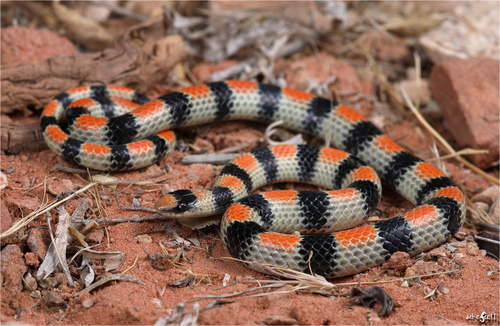
Western Ground Snake
The Ground Snake, Sonora semiannulata, is a versatile desert dweller known for its variable coloration and secretive nature. Found in arid landscapes, this small, banded snake plays a vital role in controlling insect populations, showcasing the delicate balance of desert ecosystems.
15-20 years
Lifespan
Length: 20 cm
Size
Brown, Grey, Red, Black, White, Orange
Color
Low
Aggression
Least Concern
Conservation Status
Stable
Population Trend
Characteristics
Sonora semiannulata, commonly known as the Ground Snake, is a small, slender snake found in the southwestern United States and northern Mexico. It thrives in deserts and arid regions, often hiding under rocks or burrowing in sandy soils. Its coloration varies widely, from gray to reddish-brown, often with distinct banding patterns.
Distribution Range of the Western Ground Snake
The Sonora semiannulata, commonly known as the ground snake, is native to the southwestern United States and northern Mexico. Its geographical distribution includes states such as Arizona, New Mexico, Colorado, Utah, Nevada, Texas, and extends into parts of Mexico, including Chihuahua and Sonora.
Western Ground Snake's Habitat
Environmental Conditions
This species typically inhabits arid and semi-arid regions characterized by deserts and scrublands. The environmental conditions are often hot and dry, with sparse vegetation consisting of desert shrubs and grasses. The ground snake is also found in rocky areas, sandy soils, and sometimes in grasslands, often favoring habitats that provide ample cover and access to insects and small invertebrates for food.
Ecological Niche
The Sonora semiannulata occupies an ecological niche as a small, nocturnal predator. It plays a role in controlling insect populations and is adapted to life in harsh, dry environments. Its coloration and small size provide camouflage against predators, and it has adapted to survive with limited water resources.
Copyright @ Nature Style Limited. All Rights Reserved.
 English
English